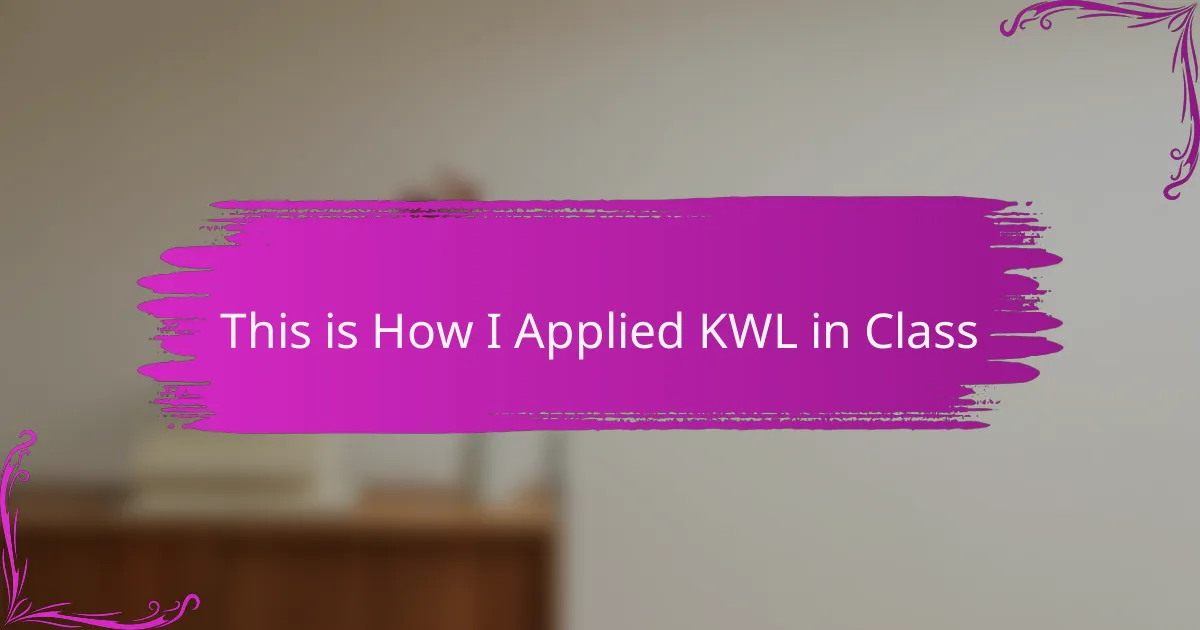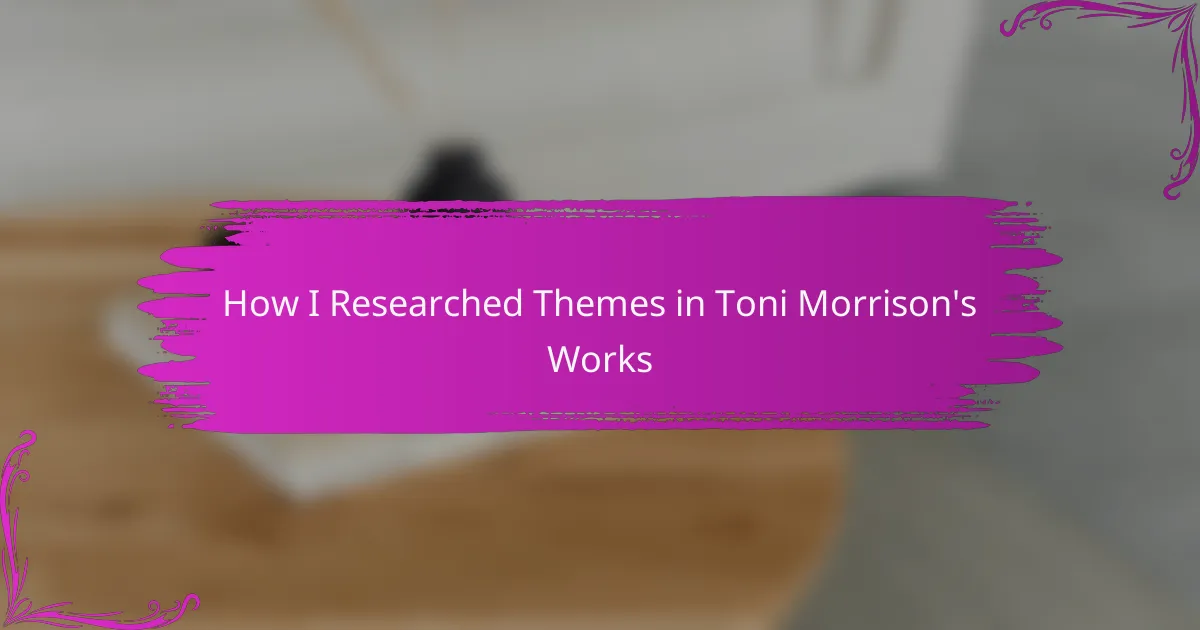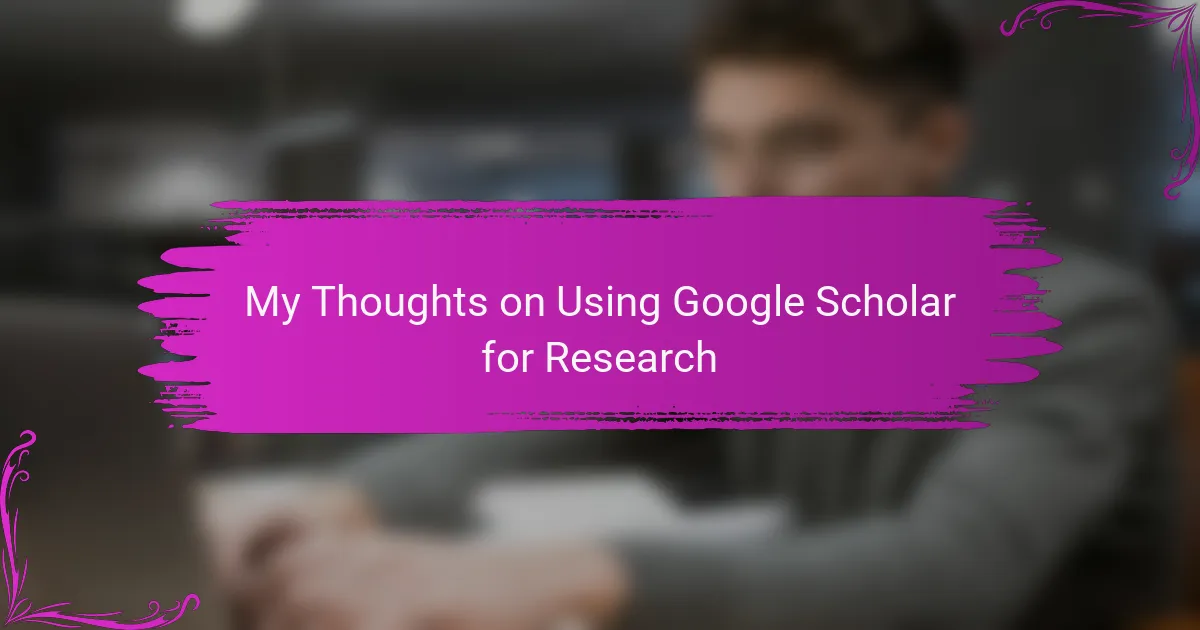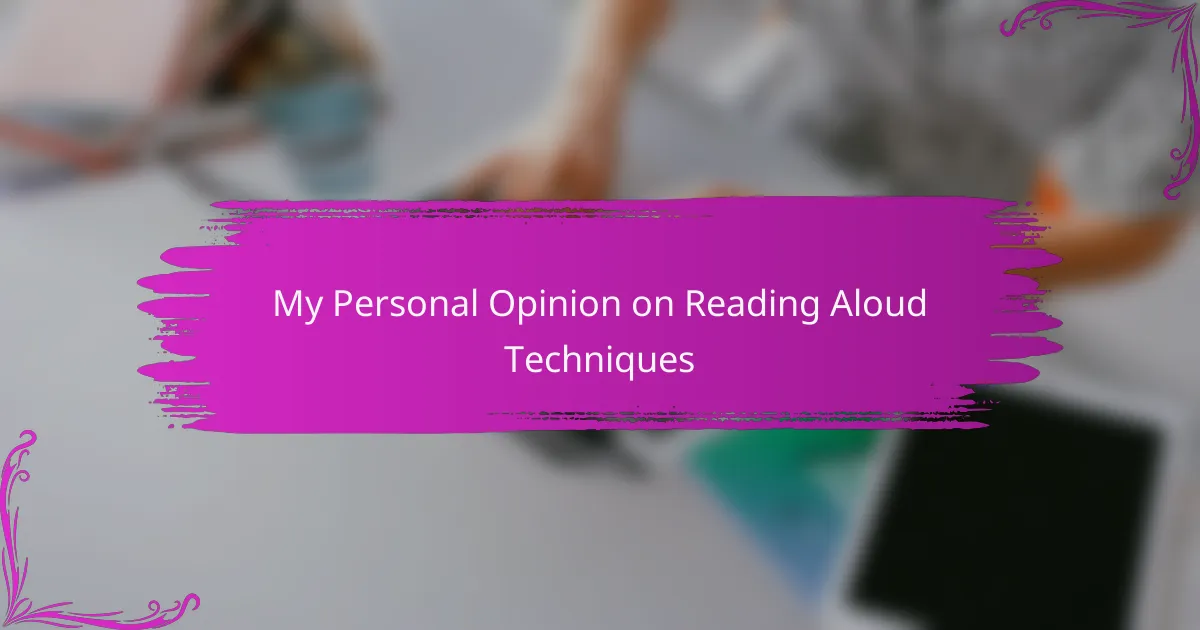Key takeaways
- The KWL method (Know, Want to know, Learned) actively engages students by connecting prior knowledge with new concepts, fostering ownership of their learning.
- Implementing KWL enhances student engagement and encourages them to set learning goals, resulting in deeper understanding and meaningful connections to the material.
- Adapting KWL for diverse learners, such as using visual supports, can lead to richer insights and greater participation in discussions.
- Feedback from students highlights the method’s effectiveness in empowering them to voice ideas and questions, creating a supportive learning environment.
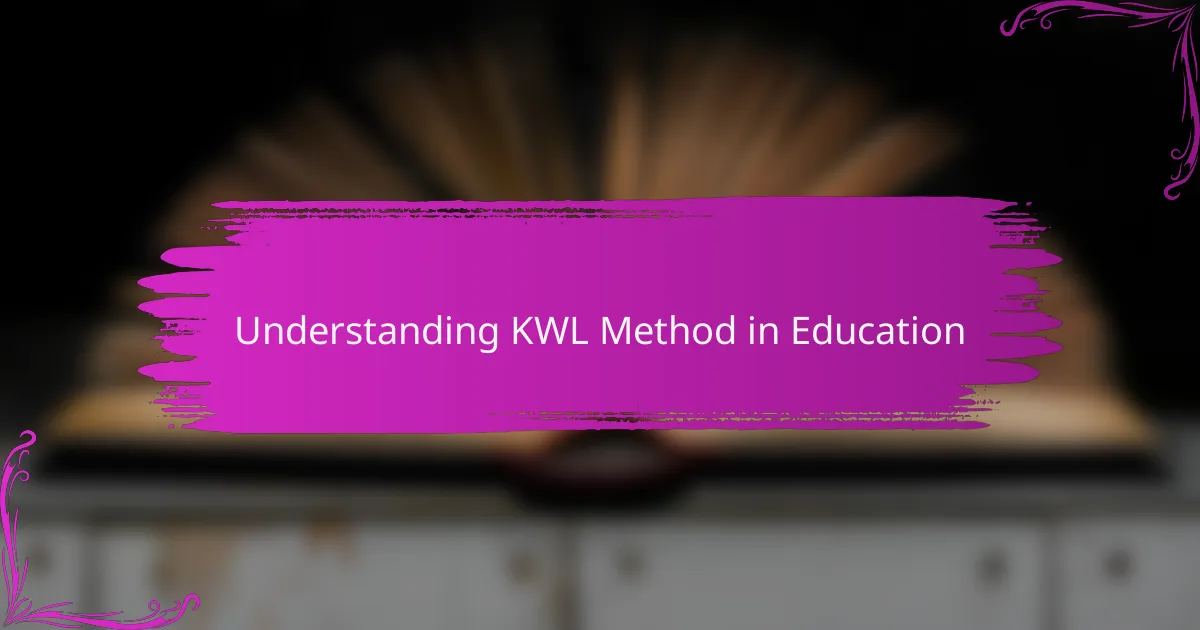
Understanding KWL Method in Education
The KWL method—standing for Know, Want to know, and Learned—has been a transformative tool in my teaching toolkit. It helps students activate prior knowledge, guiding them in exploring new concepts. I remember a class where students were buzzing with ideas during the “Want to know” phase, demonstrating their genuine curiosity and willingness to engage with the material.
Incorporating KWL into lessons not only encourages participation but also fosters a sense of ownership in learning. I’ve seen students light up when they can connect their existing knowledge with new information, which ultimately enhances their retention and comprehension.
- Know: Begin by having students list what they already know about a topic.
- Want to know: Encourage them to express their questions or interests regarding the subject matter.
- Learned: After the lesson, students reflect on what they’ve learned, solidifying their understanding and insights.
This method not only promotes critical thinking but also builds confidence as students see their questions answered.
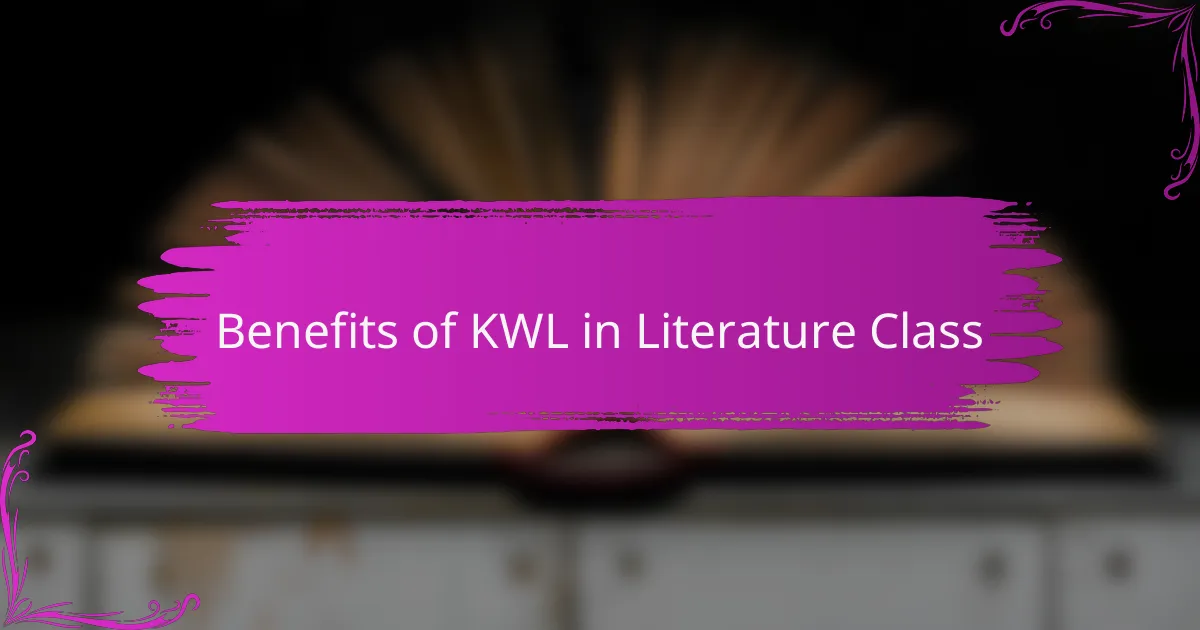
Benefits of KWL in Literature Class
When I first implemented the KWL (Know-Want-Learn) strategy in my literature class, I immediately noticed an increase in student engagement. The students were eager to share what they knew about a text before diving in, which built their confidence and sparked lively discussions. I recall a moment when a shy student opened up about their personal connection to a character, and it really set the tone for our analysis.
Another significant benefit I’ve observed is how KWL encourages students to set goals for their learning. By formulating their questions and desires, they feel invested in the material. This ownership cultivates a deeper understanding and allows for more meaningful connections with the literature we explore.
Here’s a quick comparison table outlining the benefits of KWL specifically in literature classes:
| Benefit | Description |
|---|---|
| Increased Engagement | Students actively participate by sharing prior knowledge. |
| Goal Setting | Encourages students to articulate their learning objectives. |
| Personal Connection | Fosters deeper insights through personal reflections on texts. |
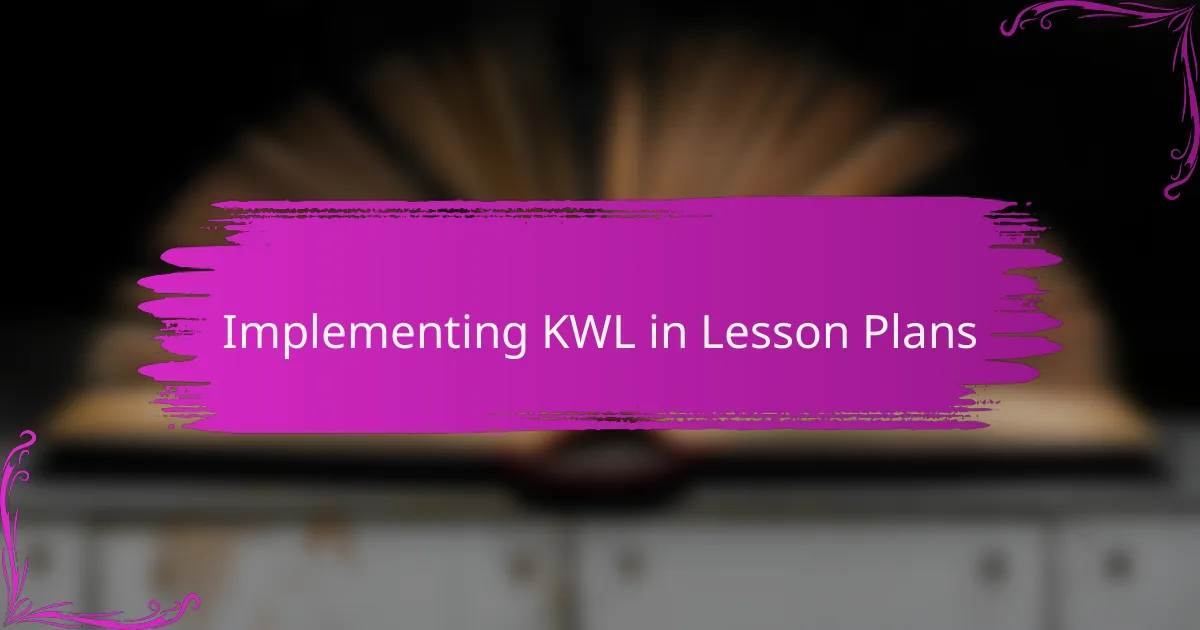
Implementing KWL in Lesson Plans
Implementing the KWL (Know, Want to know, Learned) strategy in my lesson plans has truly transformed classroom dynamics. I remember the first time I used it; the energy in the room shifted as students took ownership of their learning. They were not just passive listeners but active participants, eager to explore the material and share their curiosities.
To effectively integrate KWL into lesson plans, I’ve found the following practices to be essential:
- Start with a KWL chart to gauge what students already know about the topic.
- Encourage students to brainstorm questions they want answered, making their interests the focal point.
- Allocate time at the end of the lesson for students to reflect on what they learned, fostering a sense of accomplishment.
- Use the KWL framework across various subjects to promote cross-curricular connections, enhancing engagement and understanding.
- Regularly revisit previous KWL charts, allowing students to track their learning journey and reinforce their knowledge.
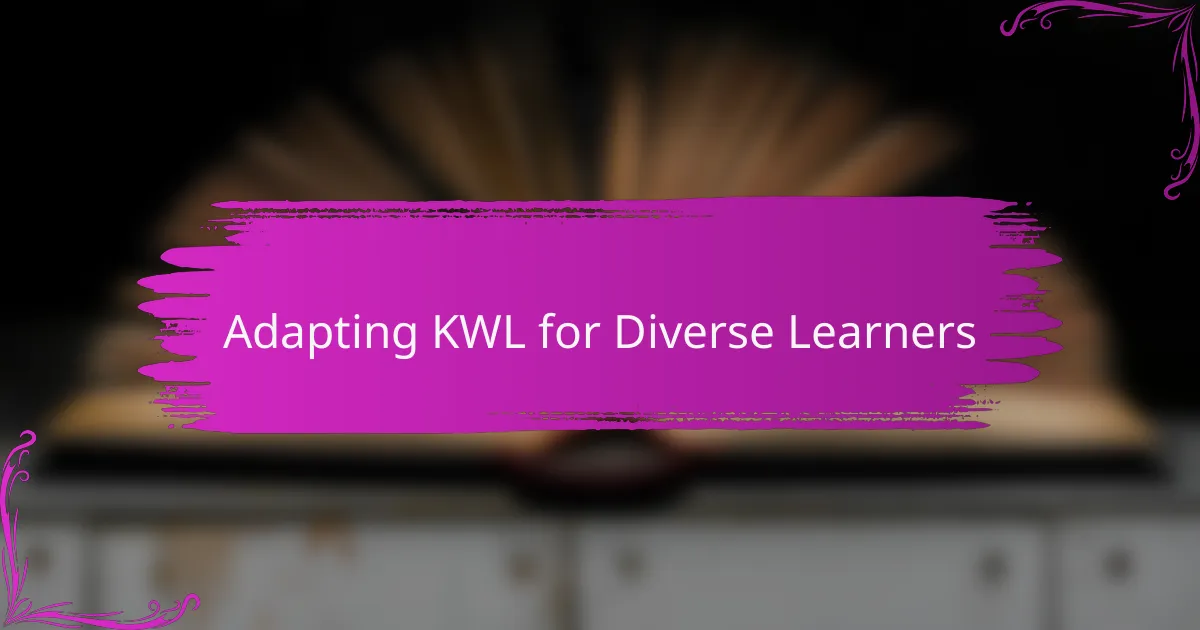
Adapting KWL for Diverse Learners
Adapting the KWL method for diverse learners truly expands its potential. I remember working with a student who had unique learning challenges; their immense curiosity shone through during the “Want to know” phase. By providing visual supports and encouraging oral expressions, they were able to engage fully, turning excitement into meaningful discussions.
Moreover, differentiation plays a crucial role in incorporating KWL. For instance, I often scaffold the “Know” section by allowing students to draw or use graphic organizers, which helps those who may struggle with written expression. It’s fascinating to see how varied approaches can lead to richer insights from students who think differently.
I also find that creating a safe environment is essential. Students need to feel comfortable sharing their thoughts, which can be hard for some. During one class, I witnessed a breakthrough moment when a student, usually quiet, voiced a profound question about a text we were reading. That moment reinforced for me the power of tailored adaptations in fostering confidence and engagement in every learner.

Personal Experience with KWL Application
I’ll share a personal experience that highlights how impactful the KWL method can be. Recently, during a unit on Shakespeare’s Romeo and Juliet, I used KWL to gauge my students’ understanding. I still remember the buzz of excitement when students began to jot down what they already knew about the play. One student, usually quiet, surprised me by sharing fascinating details about the historical context of feuding families in real life. This moment reminded me how the KWL method can bring out hidden gems of knowledge and spark rich class discussions.
After the “Want to know” phase, students pointed out questions that caught me off guard, like, “What makes someone a hero in a tragic story?” It was exhilarating to witness them actively seek answers and take ownership of their learning journey. This wasn’t just about the material; it was about them connecting the dots to their own lives, which enriched our classroom experience. It also led to deeper reflections during the “Learned” section, as they evaluated their own insights and connections to the text.
The KWL method has truly reshaped how I approach literature lessons. A few weeks ago, we revisited our KWL charts after finishing Romeo and Juliet, and seeing those charts filled with reflections was a proud moment for me. With every “Learned” entry, I felt a sense of fulfillment, knowing that the students were not only absorbing the text but also engaging with it on a personal level. Isn’t that what teaching is all about? Fostering a genuine love for learning and literature?
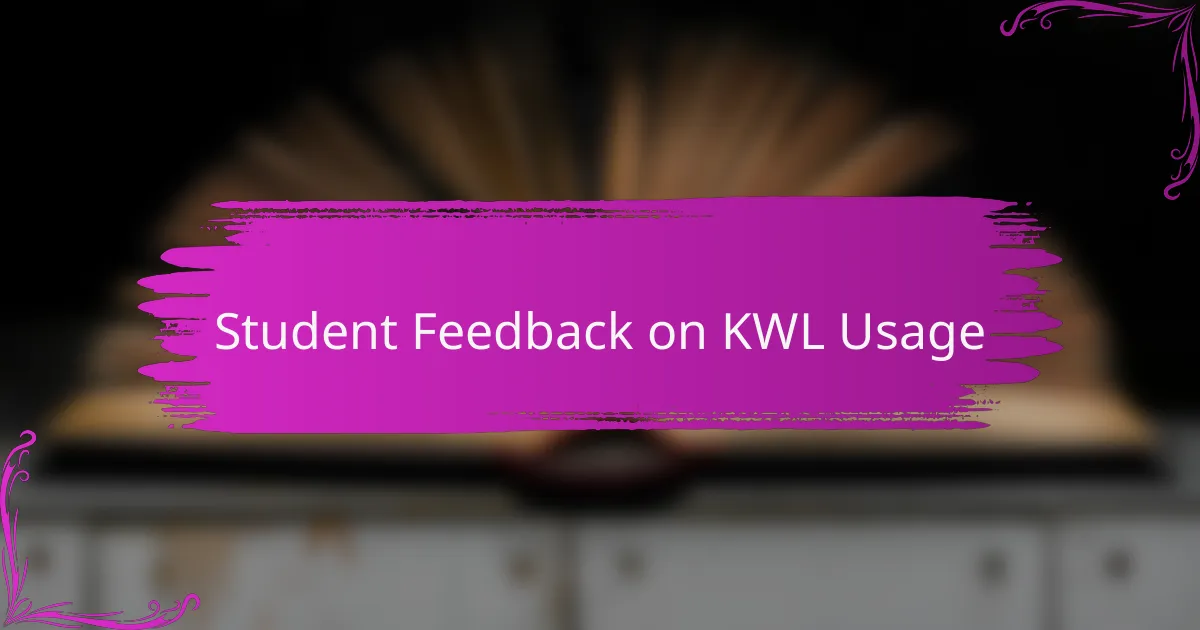
Student Feedback on KWL Usage
The feedback I’ve received from students about the KWL method has been overwhelmingly positive. Many express how it empowers them to voice their ideas and questions without fear of being wrong. I remember one student saying, “I never thought my thoughts mattered this much!” Hearing that truly emphasized the KWL’s ability to foster a sense of belonging and personal contribution in the classroom.
Another interesting point that has come up during discussions is how students appreciate the clarity KWL brings to their learning journey. They often remark on how outlining what they wanted to know helped direct our lessons more effectively. I’ve seen students who initially felt lost in a topic become engaged and curious, transforming their approach to learning. It’s rewarding to witness their progression from uncertainty to confidence.
On a personal note, I was struck by a student who reflected on their KWL chart at the end of a unit. They shared, “I realize now that I can ask questions that matter, and it makes learning fun.” That moment resonated with me deeply. It’s these insights that reinforce my belief in the KWL method; it truly cultivates an environment where students can thrive and explore knowledge in meaningful ways.
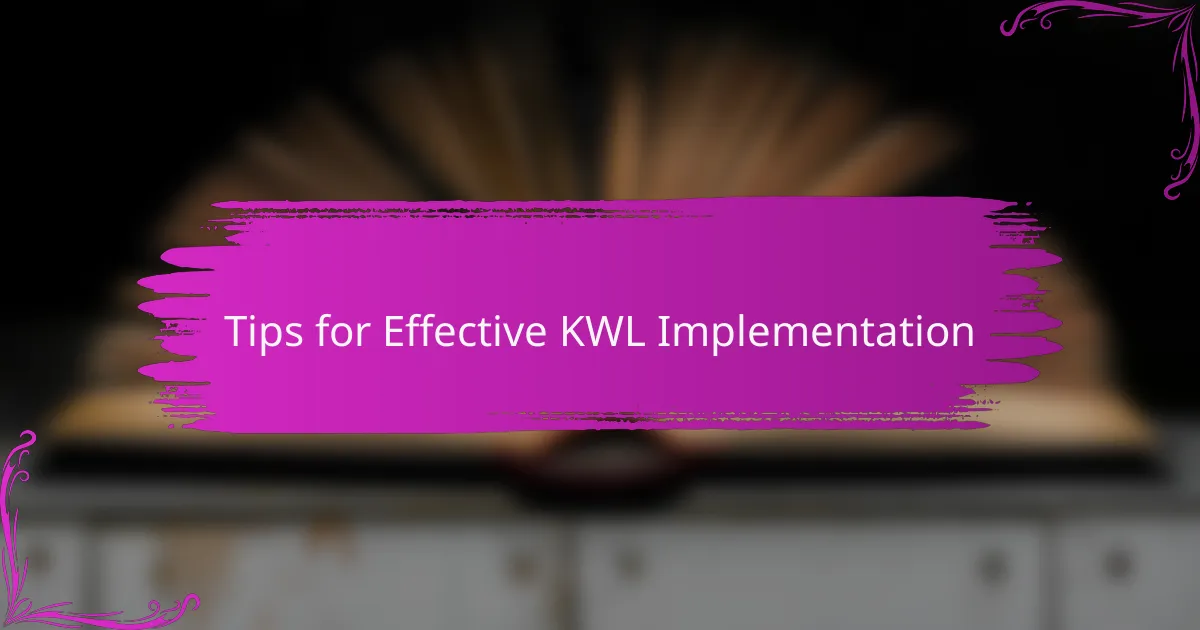
Tips for Effective KWL Implementation
To achieve effective KWL implementation, it’s vital to create an engaging atmosphere right from the start. I often set the tone by presenting intriguing prompts or visuals that relate to the topic at hand. This sparks initial discussions, allowing students to feel invested from the get-go. Isn’t it amazing how a simple question or image can ignite curiosity and encourage students to fire off their thoughts?
Another important tip is to keep the “Want to know” phase open-ended. I encourage students to ask diverse questions, no matter how big or small. What I’ve noticed is that this variety enriches our discussions and leads to surprising revelations. I can still recall a time when a student’s seemingly simple question opened up an entire debate about moral choices in literature – a moment of true collective learning.
Lastly, don’t shy away from revisiting the KWL chart throughout the lesson. I like to remind students of their initial questions and touchpoints. This helps in maintaining their focus and motivation as we progress. Just the other day, a student pointed back to their chart and exclaimed, “I get it now! That question I asked makes so much more sense.” Moments like these serve as powerful reminders of the KWL method’s impact in not just tracking learning but also fostering a deeper engagement with the material.
